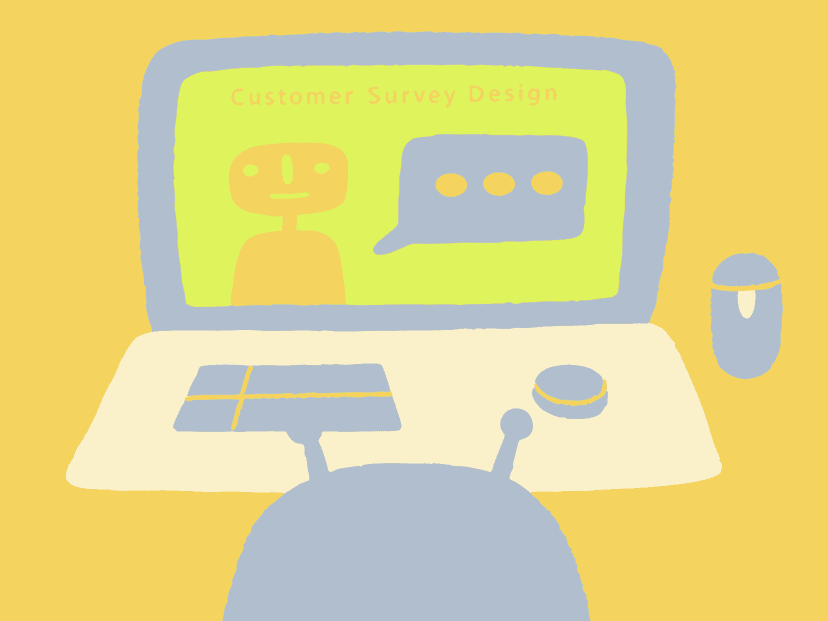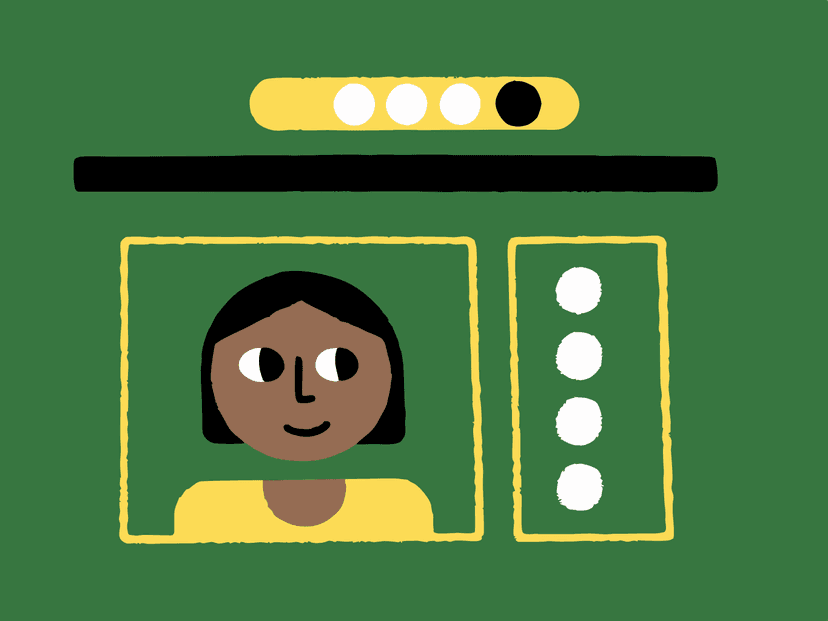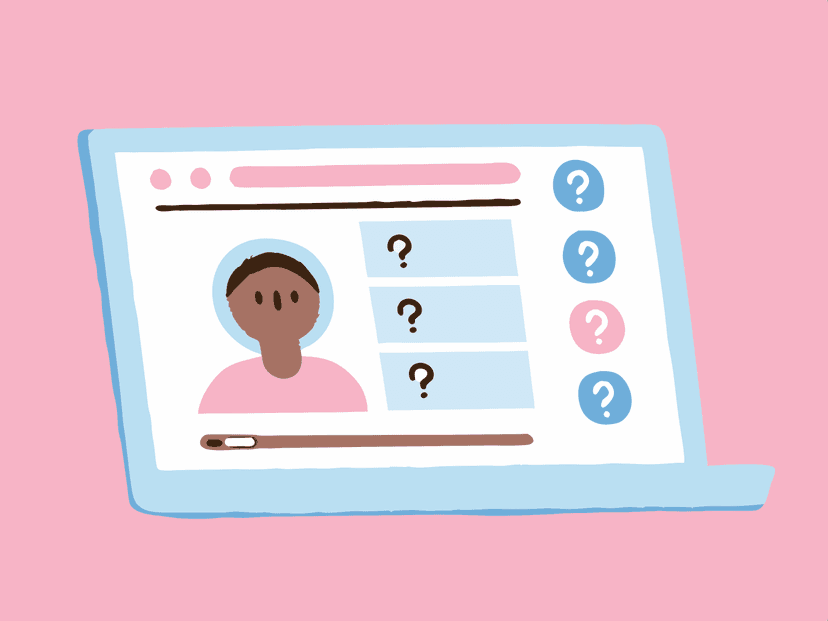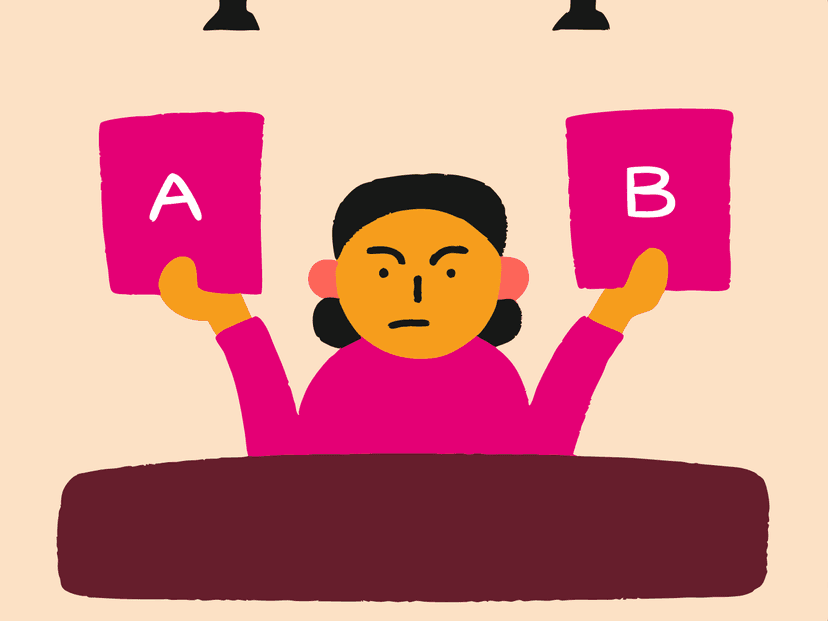Monday, October 28, 2024
The Ultimate Guide to User Interviews: From Theory to Practice

User interviews are one of the most common user research methods. While many product managers and designers who focus on user experience have some understanding of the methodology and knowledge in this area, there's still a big gap between theory and practice. The actual implementation involves many detailed considerations that professional knowledge alone cannot address. After participating in real interviews, I gained very different insights and realized that professional knowledge only serves as an aid - more planning needs to be done based on actual project or research objectives.
I've been fortunate to participate in large-scale user research, where under the guidance of UX experts, I led a team that interviewed 39 people over nearly two months. I also led field user interviews with 24 participants over more than a month. I'd like to share my learnings and reflections from these experiences to help other user researchers.
To conduct a valuable user interview, thorough preparation before the interview, attention to key points during the interview, and post-interview analysis are all essential. Since there's so much content to cover, I'll break this down into three series focusing on different aspects. This chapter will focus on what preparations we need to make before interviews and what we should pay attention to.
Let's first understand the basic concepts: what user interviews are and their value.
1. Basic Concepts of User Interviews
What is a User Interview?
A user interview is a qualitative research method aimed at deeply understanding users' needs, motivations, behavior patterns, pain points, and attitudes toward specific products, services, or systems. It's a one-on-one communication process, either face-to-face or remote, where the interviewer guides users to have in-depth discussions on specific topics.
User interviews can be categorized in different dimensions. In terms of structure:
- Structured interviews
- Unstructured interviews
- Semi-structured interviews
In terms of contact method:
- Face-to-face interviews
- Phone interviews
- Online interviews
Based on purpose, content and approach:
- In-depth interviews
- Exploratory interviews
- Usability interviews
- Satisfaction interviews
- Focus group interviews
Each type has its specific application scenarios and advantages. Researchers can choose suitable interview types based on research objectives, resources, time and other factors.
Why Conduct User Interviews?
The value of interviews varies at different product stages, mainly manifesting in:
1 Collection
Usually occurs when building products or features from scratch (0-1). We need to understand user needs and preferences, collect and define requirements for solving user pain points, and identify core demands. At this stage, user requirements are relatively rough - having the core functionality to solve pain points is sufficient.
2 Validation
After launching new features or designing new products, usability interviews can quickly test and validate, getting user feedback that combined with product launch data helps quickly identify optimization directions.
3 Exploration
When products need optimization direction, user interviews can specifically dig into reasons behind user behaviors and explore new design opportunities. At this stage, user requirements are more refined - core functionality must not only exist but also be usable and easy to use.
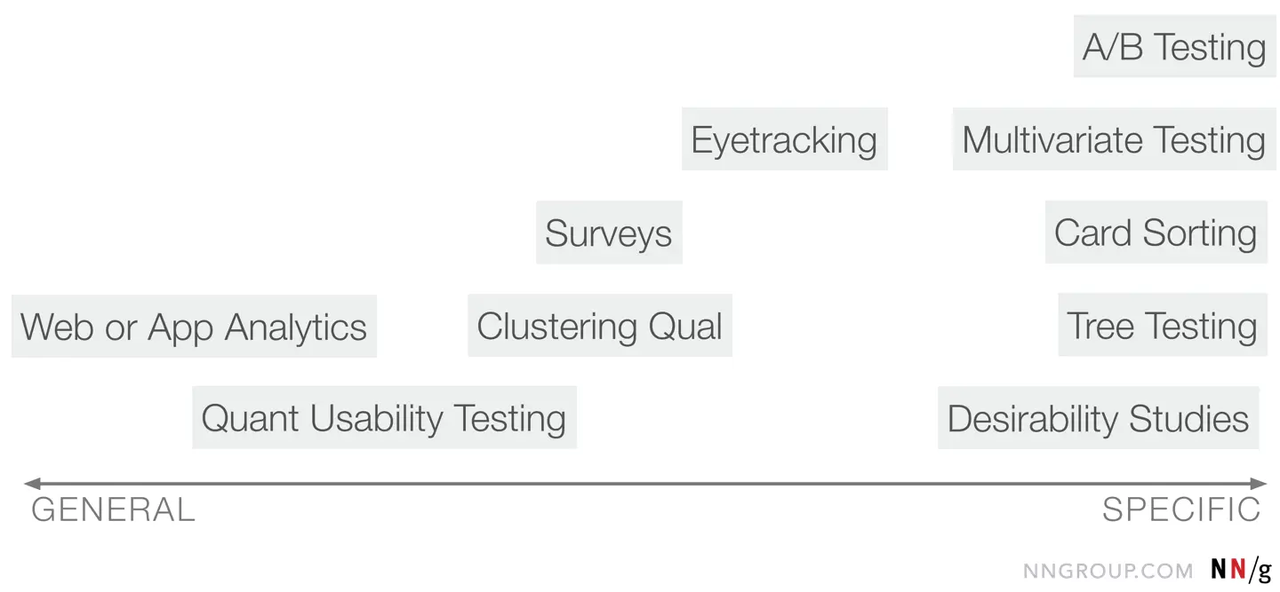
2. Implementing User Interviews: Pre-Interview Preparation
Pre-interview preparation has two key deliverables: research plan and interview guide. The research plan is the overall action arrangement and planning based on business requirements, while the interview guide serves as the script for actual interviews.
2.1. Research Plan
A research plan typically includes:
-
Research objectives
-
Research planning
-
User sample design
-
Interview materials preparation
-
Interview participants
-
Recruitment channels
-
User compensation
-
Research objectives: Before interviews, we need to define the scope of research, expected goals through research, and final expected deliverables (e.g., user experience maps, user personas, usability evaluation reports, etc.)
-
Research planning
To achieve research objectives and business requirements, user research is often combined with other research methods in practice, such as:
-
User interviews + Surveys: Use surveys to analyze and quantify opportunity points discovered through interviews, further validating their value to help guide product optimization.
-
User interviews + A/B Testing: After analyzing issues discovered in interviews and developing design solutions, conduct A/B testing before or after launch to quickly validate solution effectiveness. Pre-launch validation can avoid wasted resources, while post-launch validation can quickly validate through small-scale user behavior data comparison.
-
User interviews + Workshops: Issues discovered in interviews can be addressed through workshops with stakeholders to brainstorm together. This helps categorize and filter valuable issues and find solutions or design delight points. Usually used for business requirements needing breakthrough experience optimization strategies.
To better understand when to use each research method, we can look at three dimensions: attitude vs behavior, quantitative vs qualitative, and usage scenarios. The following chart shows 10 common research methods:
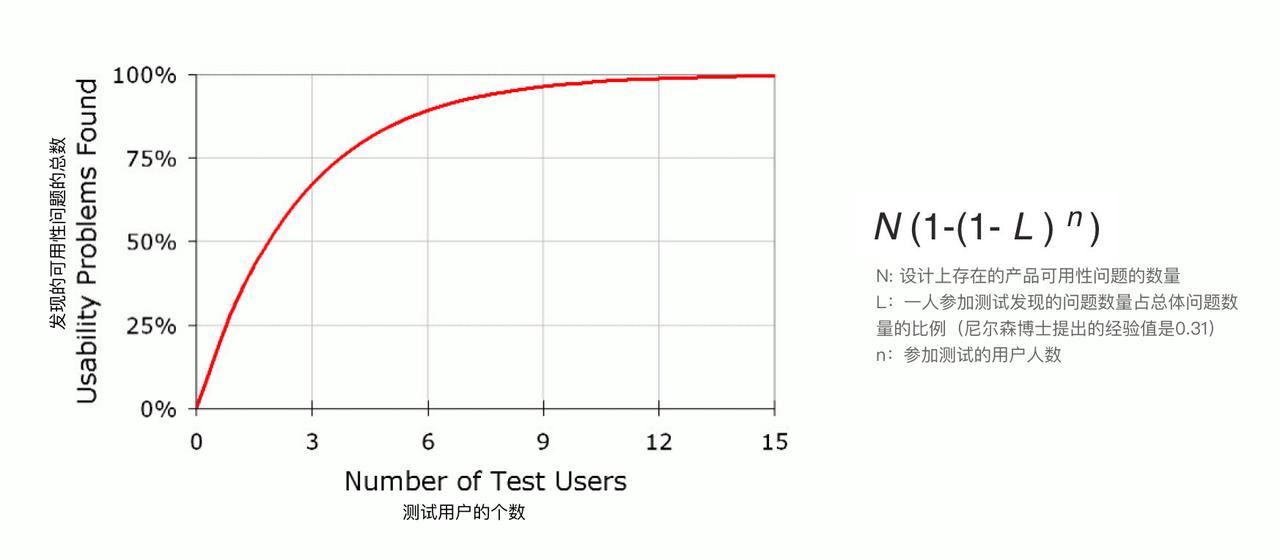
2.2. User Sample Design
The quality of user samples directly affects interview credibility. There are two principles:
- Typicality: Usually means representative and experienced users who can provide more valuable insights.
- Diversity: Cover multiple types to understand both unique and common issues.
"According to Nielsen's classic usability testing theory, 6-8 people can find over 80% of product usability issues"
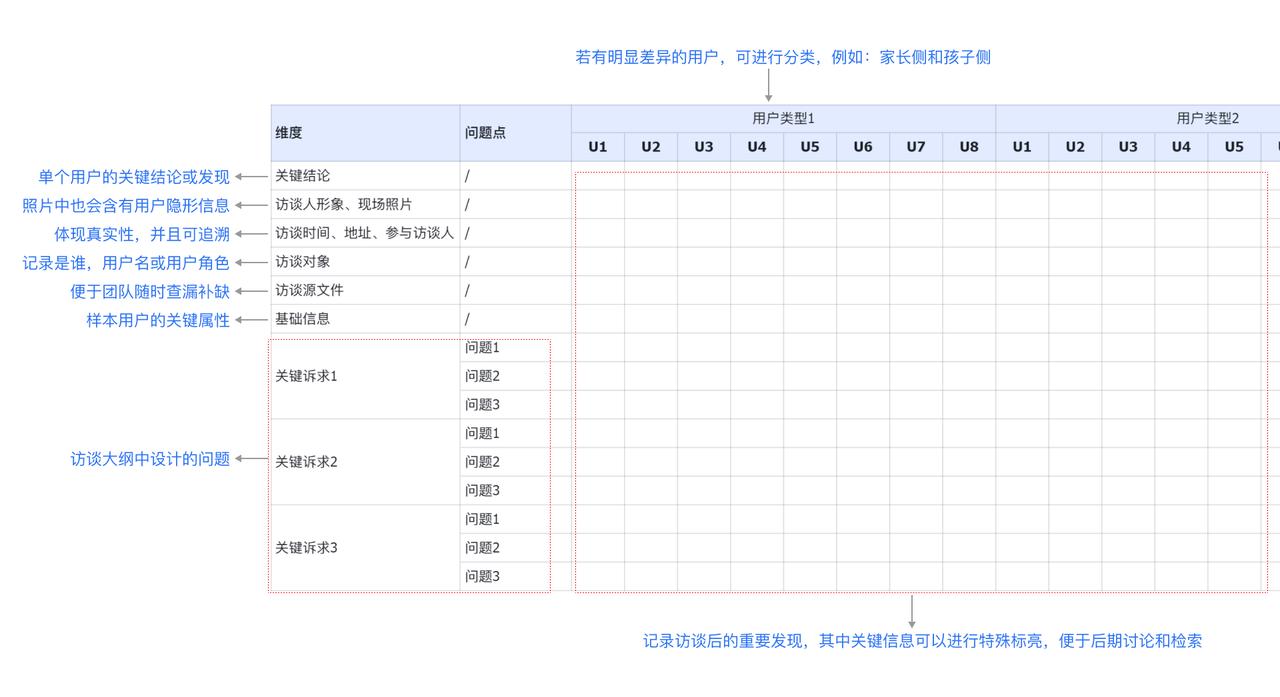
User sample design should be based on some understanding of users. For new project interviews, it's recommended to interview a few users first, then combine with online research data for comprehensive analysis before setting user quotas and screening conditions.
2.3. Interview Material Preparation
The most important interview material is the interview guide (detailed later). Next is the candidate interviewee information record form. Here's a template based on my experience that you can reference for your projects:

2.4. Interview Participants
Usually consists of a main interviewer, note-taker, and observer. Keep the number small to avoid making users feel pressured - 2-3 people is optimal (1 interviewer + 1 note-taker + 1 optional observer). You can invite different roles like product managers, designers, operations etc. to benefit from the interviews while also getting their role-specific follow-up questions.
2.5. Recruitment Channels
Multiple approaches are possible:
- Best: Core users provided by stakeholders through database screening or user groups
- Self-recruitment through personal networks
- Cold approaches like street intercepts (higher screening costs)
2.6. User Compensation
Confirm compensation upfront - usually small gifts or monetary compensation. My experience shows users are more willing to share when thanked with gifts, since they're investing time. Choose compensation based on target users' needs, product characteristics, costs, and interview length.
The research plan is usually drafted by the initiator and reviewed by stakeholders, potentially going through multiple revisions until all parties are satisfied. Managing quality and expectations early helps subsequent research work proceed more smoothly.
The second key pre-interview deliverable is the interview guide.
3. Interview Guide
3.1. Why Need an Interview Guide?
Before formal user interviews, interviewers need a basic guide for structure and control, especially when coordinating team interviews.
3.2. How to Design a User Interview Guide
An interview guide typically has three parts:
1. Warm-up - Opening
Self-introduction: Explain your background, purpose, and estimated interview duration to set expectations.
Ease tension: Some first-time interviewees may be nervous. Explain and encourage open sharing.
Privacy: If recording, get permission upfront. Assure confidentiality and anonymous usage of responses.
Example: "Hi! Thank you for joining our interview. I'm XXX. We'd like to understand your thoughts on XXX, taking about 20-40 minutes. Please share freely - all your thoughts are valuable to us. We'll keep your privacy confidential and only use responses anonymously in our project."
2. Main Body - Extract Valuable Information
The main guide focuses on research objectives, broken down into specific research content. For example, to get user journey maps and identify pain points and upgrade opportunities, we need to understand past experiences and review needs, pain points and expectations across different touchpoints. This helps structure questions around:
- Scene setting
- Behavior process
- Usage feedback
- Insight inquiry
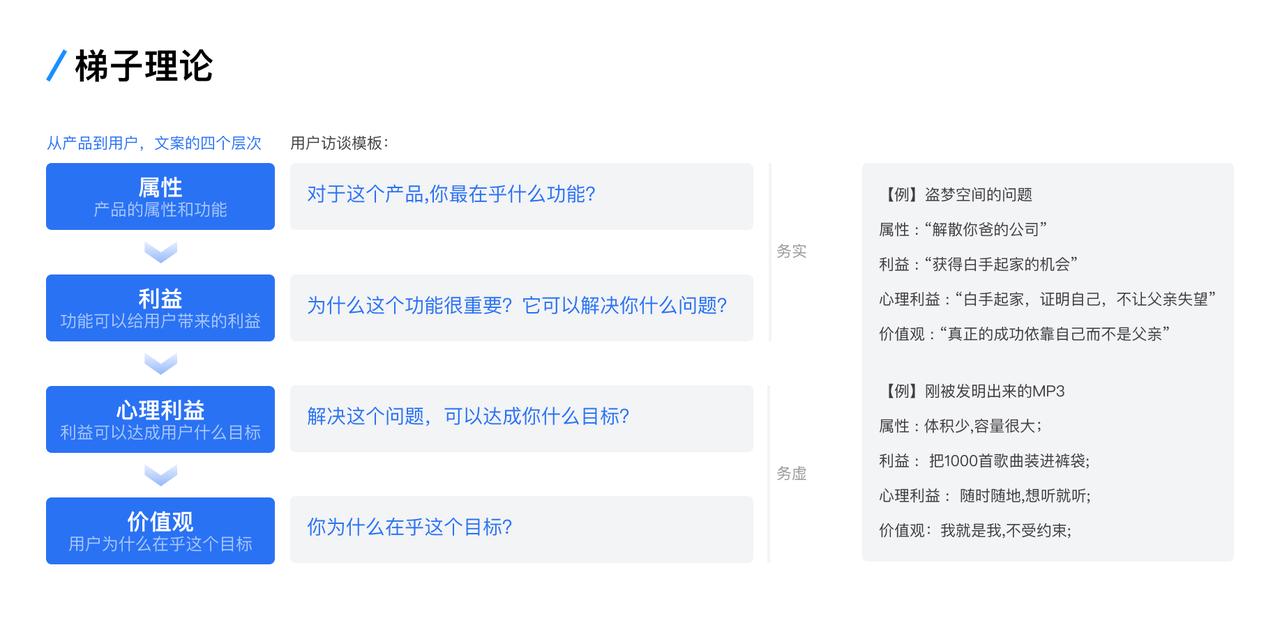
Since research objectives vary, specific question design differs greatly. Here are some common script examples for reference:
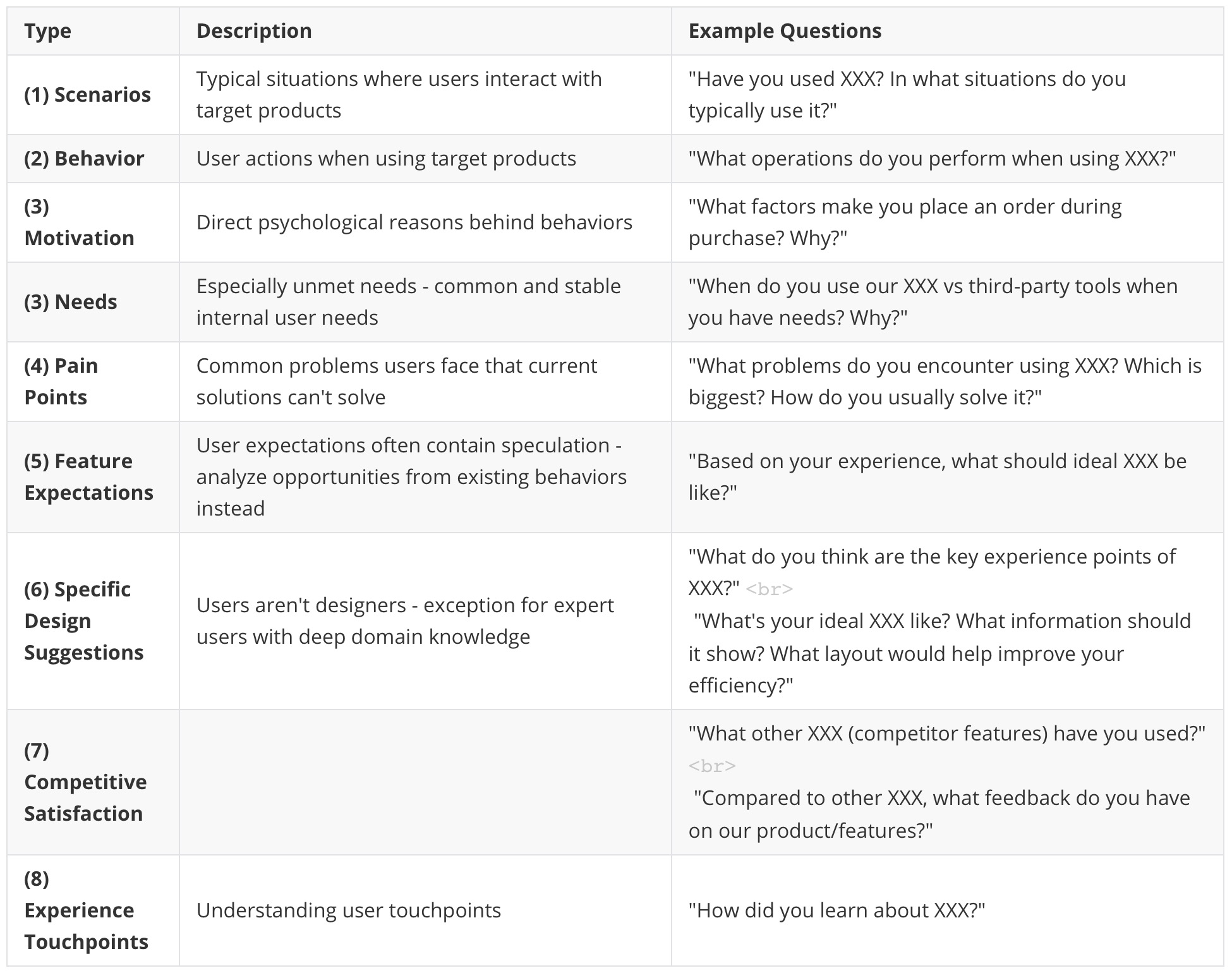
The Ladder Theory from Li Jiashou's marketing method tries to connect with users through 4 levels of copy (attributes-benefits-psychological benefits-values). Since there's a gap between products and users, use the Ladder Theory to find motivations and benefits that move users, and use these 4 levels to explain and market products, establishing connections between product value and user needs in users' minds.
In user interviews, use the Ladder Theory to find core user needs behind product features. Use these 4 progressive questions to understand psychological needs and motivations behind behaviors.
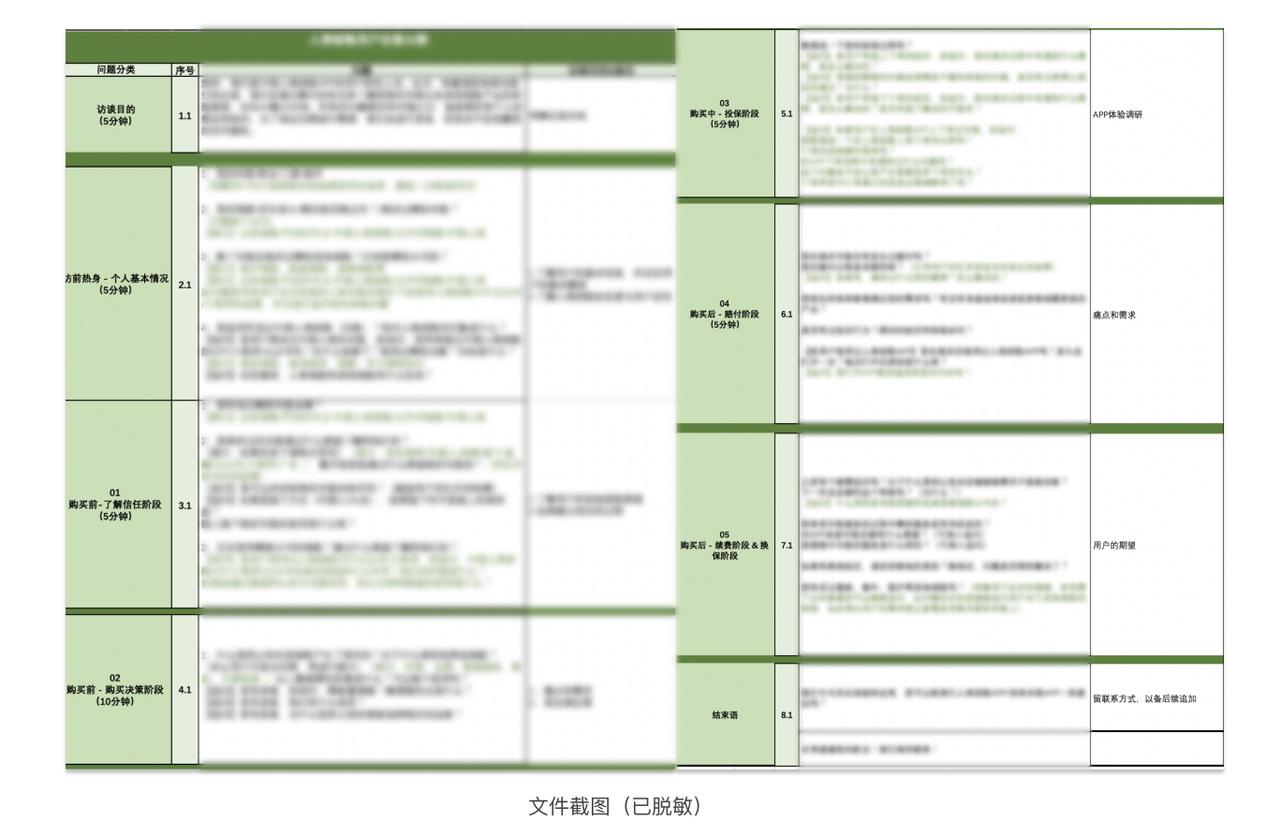
Prompts: For common interview situations - broad/unclear questions, long-ago events, difficult answers, getting stuck. When answers are superficial and valueless, use prompts to get details.
2.3 Closing
Thank users for helping the research and ask open-ended questions for additional value.
Example: "Overall, why don't you use XXX?" Example: "Do you have any other questions or suggestions to add?" Example: "That concludes our interview. Thank you very much for your time answering all my questions. Your thoughts and perspectives are very valuable to our team."
Summary
User interviews are a qualitative research method for deeply understanding user needs, motivations, behavior patterns, pain points and attitudes toward specific products or services.
Pre-interview preparation includes creating a research plan and interview guide.
The research plan covers research objectives, planning, user sample design, interview materials, participants, recruitment channels and user compensation.
The interview guide directs the interviewer during interviews, including warm-up, main body and closing. Thorough pre-interview preparation improves interview efficiency and effectiveness.
Final Thoughts
Good pre-interview preparation is like detailed strategic planning before battle - it gives you confidence and control before formal interviews begin. Of course, given my limited experience, please provide any feedback for improvement!
Related articles
